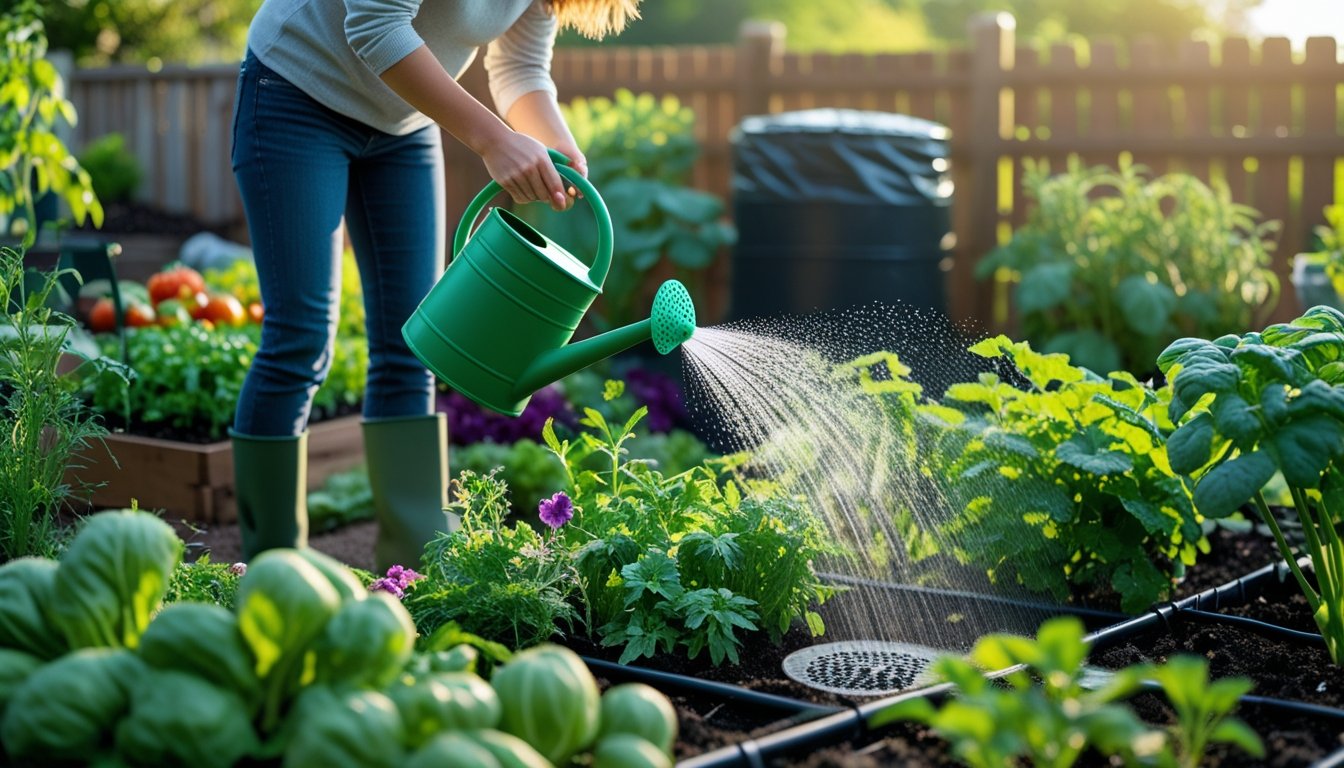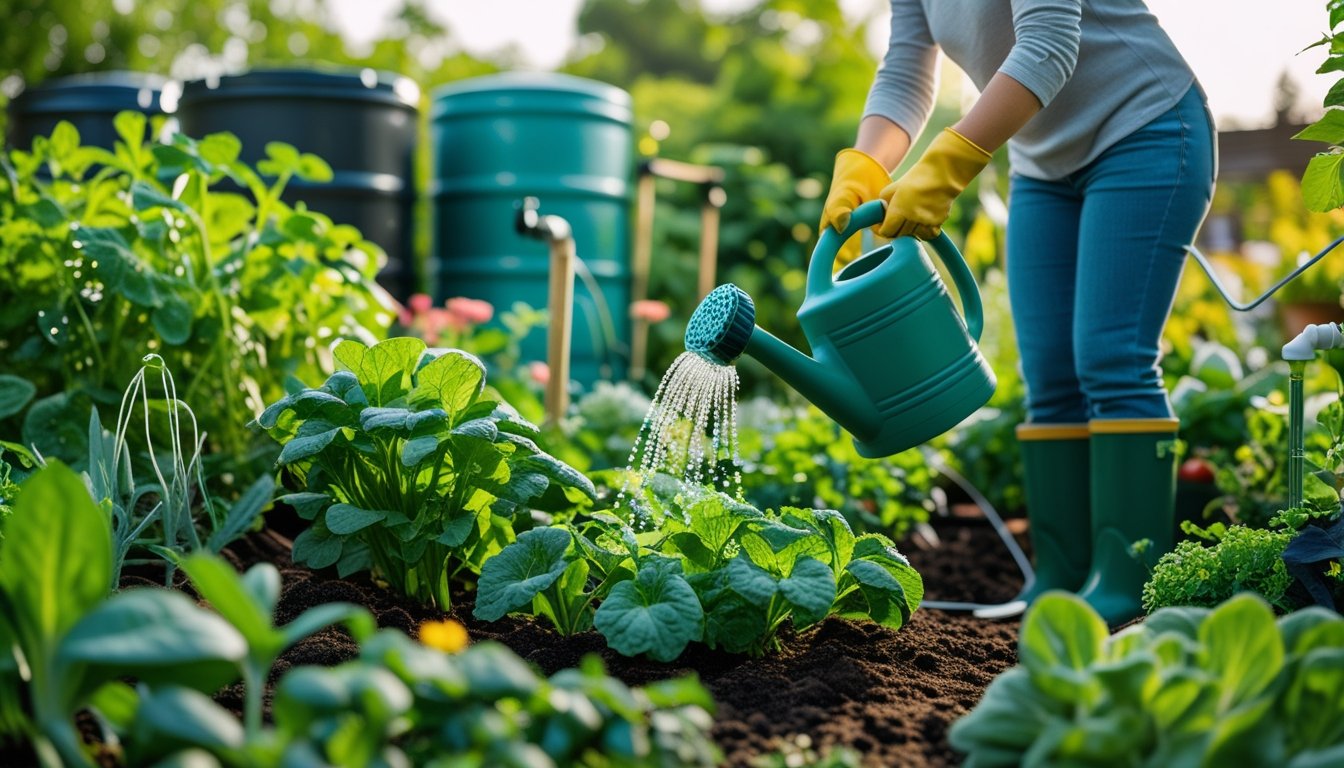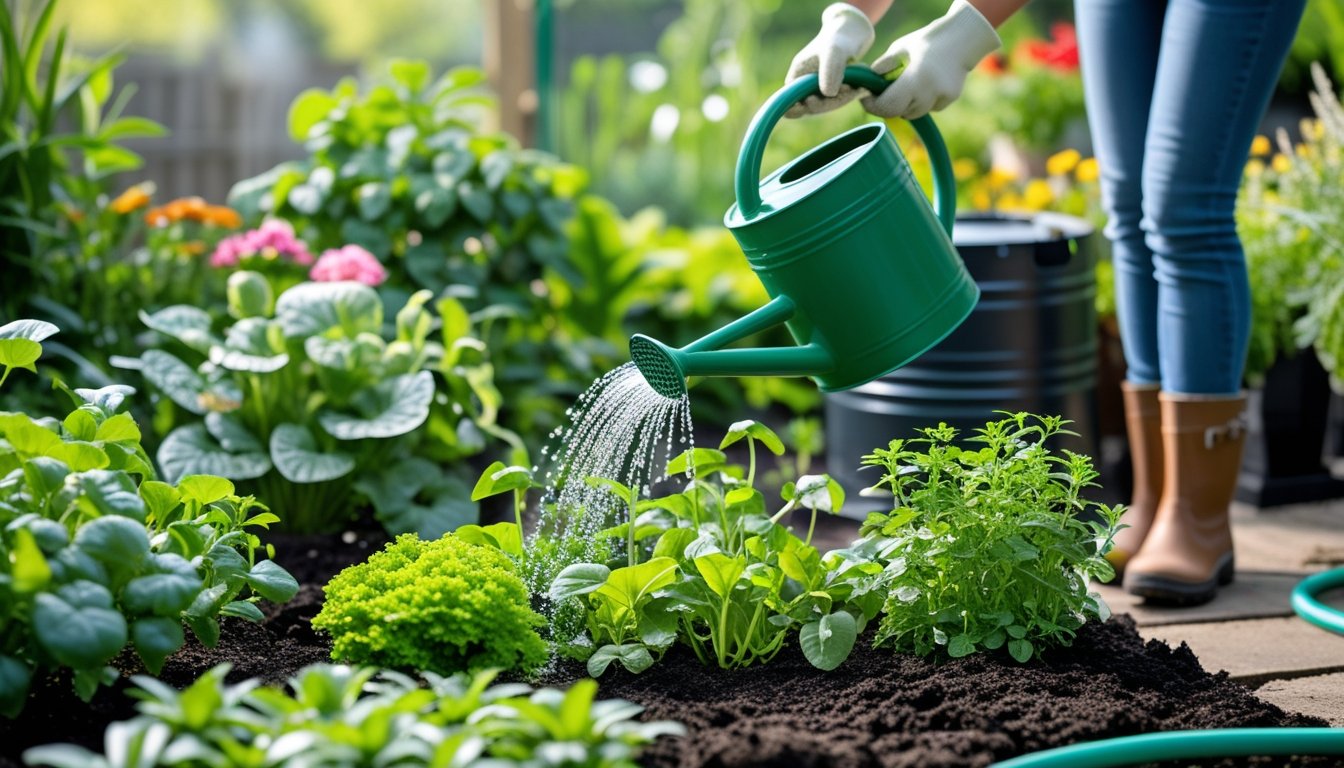Late updated: 02 Jun 2025 11:06
Written by: James Whitaker
Eco-Friendly Garden Watering Tips for Beginners: Simple Strategies for Success
Incorporating eco-friendly watering practices into our gardens can transform them into sustainable sanctuaries. Utilising methods like micro irrigation and choosing absorbent soil not only save water but also enhance plant growth. These strategies ensure we're nurturing our gardens responsibly, preserving resources for future generations.

By adopting simple techniques, we can significantly reduce the water footprint of our gardens. Practices such as using mulch effectively retain soil moisture, reducing the frequency of watering needed, especially in hot and dry conditions. Embracing these small changes can make a substantial difference.
As we explore these eco-friendly practices, we not only support our environment but also enjoy healthier, more vibrant gardens that thrive with minimal intervention. Engaging in sustainable gardening, we contribute positively to the planet, one garden at a time.
Key Takeaways
- Micro irrigation and absorbent soil improve water efficiency.
- Mulch preserves moisture and reduces watering needs.
- Eco-friendly practices enhance sustainability in gardening.
Essential Eco-Friendly Watering Practices
To create a sustainable garden, adopting eco-friendly watering practices is key. By assessing our garden's needs and selecting appropriate systems, we ensure optimal plant health and water conservation.
Assessing Your Garden’s Watering Needs
Understanding the specific watering needs of our garden is the first step towards efficient water use. Various factors, including plant type, soil condition, and local climate, play a significant role in determining the amount of water required.
For instance, drought-resistant plants typically need less water. Observing our plants for signs of under or overwatering can guide us to adjust our watering habits effectively. A soil moisture metre can help monitor soil conditions, ensuring we're providing just enough water without waste.
Water Conservation Methods
Implementing water-saving techniques in our garden can contribute significantly to conserving water resources. One effective method is deep watering, which encourages roots to grow deeper into the soil, reducing the frequency of watering.
Mulching: We can apply a layer of mulch around plants to retain moisture and reduce evaporation. Shades or barriers can also diminish water loss from sun exposure.
Timing: Early morning watering reduces evaporation, offering plants the hydration they need to thrive throughout the day.
Selecting Effective Watering Systems
Choosing the right watering system is crucial for maintaining water efficiency. Drip irrigation systems deliver water directly to plant roots, minimising runoff and evaporation. Soaker hoses and drip lines are also effective for precise watering.
Sprinkler systems, while convenient, can lead to water wastage, especially in windy conditions. A garden hose with a spray nozzle can be adjusted to target plants more directly, conserving water.
By judiciously selecting and implementing these watering systems, we can maintain healthy plants and contribute to sustainability.
Maximising Sustainability in Garden Watering

Optimising water use in our gardens not only conserves a vital resource but also enhances plant health. Let's explore practical strategies such as harvesting rainwater, employing mulching and compost, and understanding how to prevent plant diseases caused by overwatering.
Rainwater Harvesting Solutions
Collecting rainwater is a simple and effective way to reduce our reliance on tap water. Rain barrels or larger storage tanks can be installed at the base of downspouts to capture runoff from roofs. This saved water can be gradually released to our gardens, providing plants with a natural watering source that is often richer in minerals compared to treated water.
By carefully choosing the size and material of our storage options to suit our garden needs, we can maximise the efficiency of water collection. Additionally, joining multiple barrels can increase capacity, ensuring that we make the most of every rain shower.
Using Mulching and Compost to Reduce Water Loss
Mulching and composting are effective techniques to conserve moisture in our gardens. Applying a layer of mulch—be it straw, wood chips, or shredded leaves—helps to slow evaporation, maintain soil temperature, and suppress weed growth. This barrier also reduces the frequency of watering needed.
For further benefits, adding compost enriches the soil with nutrients, improving its ability to retain moisture. Compost enhances soil structure, promoting aeration and drainage while feeding plants. This combination of mulch and compost not only reduces water usage but also overall garden maintenance.
Preventing Plant Diseases Related to Overwatering
Excessive watering can lead to issues like powdery mildew and root rot. To prevent diseases, it is crucial to understand our plants’ specific water needs. Examining our soil before watering helps us determine the right schedule and avoid saturation.
Implementing proper irrigation techniques, such as drip irrigation, can provide a slow, steady water supply directly to the plant roots. This reduces splash-related diseases and minimises water loss to evaporation. Attention to correct spacing when planting also encourages airflow, helping prevent moisture build-up and related diseases.
By adopting these methods, we maintain a healthy garden while conserving water effectively.
Frequently Asked Questions

Understanding the most efficient garden irrigation methods involves mastering watering techniques, identifying signs of over or under-watering, and leveraging water-saving devices. Developing an eco-friendly schedule balances conservation with plant health, especially during hot weather.
What is the most efficient method to irrigate your garden?
Drip irrigation tops the list for efficiency. This system directs water right to the plant roots, minimising evaporative loss and ensuring plants receive optimal hydration.
What are the basic principles of effective garden watering?
Effective watering hinges on consistency and depth. Watering less often but deeply encourages roots to grow deeper, making plants hardier and more drought-resistant.
Is it necessary to water my vegetable garden daily during hot weather?
Daily watering isn't always necessary. Instead, assess soil moisture a few inches down. If it's dry, it's time to water. Plants benefit more from a thorough soaking every few days.
What are the best water-saving devices for gardens?
Look into smart sprinkler systems and soil moisture sensors. These devices adjust water usage based on environmental conditions, saving both water and money.
How do I create an eco-friendly watering schedule for my garden?
Schedule watering for early morning or late evening to reduce evaporation. Use weather forecasts to adjust your plan, avoiding watering right before or after rain.
What are the signs that my garden is either over or under-watered?
Leaf wilt and yellowing can signal both conditions. Over-watering typically leaves the soil soggy while under-watering results in dry, cracked soil. Check moisture levels to confirm.
